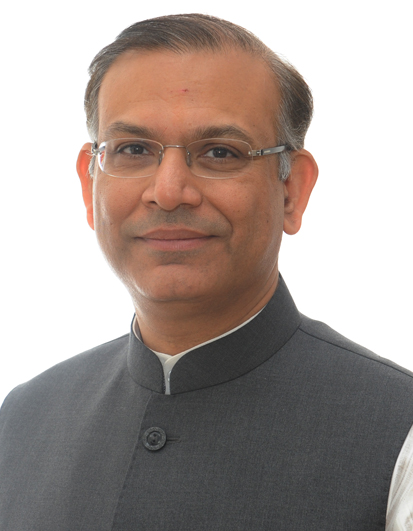The Times of India reported on Saturday that Jayant Sinha, the minister of state for finance, had indicated to public sector bank chiefs that they were wasting public funds. Sinha said this at an offsite for public sector bankers organised at Gurgaon.
The Economic Survey for 2015-2016 points out that between 2009 and September 30, 2015, the government had infused Rs 1.02 lakh crore of capital. It is this money that Sinha was perhaps referring to.
The government is the main owner of 27 public sector banks. If it has chosen to invest more than Rs 1 lakh crore in these banks over the last seven years, then as the owner of these banks, it has chosen to waste public money.
There is no point in trying to pass on the buck to the chiefs of public sector banks. Of course, it needs to be pointed out here that, the government in this case means both the Manmohan Singh government that governed until May 2014 and the Narendra Modi government which has been in power since then.
The current budget has made an allocation of Rs 25,000 crore for further capital infusion into these banks. As the finance minister Arun Jaitley said in the budget speech: “If additional capital is required by these Banks, we will find the resources for doing so. We stand solidly behind these Banks.” This was Jaitley’s way of saying that the government will do whatever it takes to keep these banks going.
This builds in a tremendous amount of moral hazard into the entire system. Economist Alan Blinder writing in After the Music Stopped says that the “central idea behind moral hazard is that people who are well insured against some risk are less likely to take pains (and incur costs) to avoid it.”
Hence, if the government keeps infusing capital into public sector banks and keeps rescuing them when they are in trouble, there is no real incentive on part of public sector banks to run a responsible, viable and a profitable business. This is moral hazard at play. It is not surprising that as of the end of December 2015, the gross non-performing assets of listed public sector banks stood at Rs 3.9 lakh crore.
The government is keen to hold on to these banks. As the Economic Survey pointed out: “The return on assets for most banks is currently less than one third of the norm of 1 per cent that is considered reasonable. Many, though not all, of the less profitable banks are those with smaller levels of employment.” Despite this, the government remains obsessed with the idea of owning 27 public sector banks.
There has been no effort made to sell out of these banks or even shut them down. The total employment in public sector banks currently stands at around 87,000 employees. Given this, shutting down some of the smaller banks which are in trouble, is not going to much of a difference, at least on the employment as well as the lending front. Further, no effort has been made to privatise them either.
The state that some of these banks are in right now, there is no way the government is going to get a decent valuation while selling them. Nevertheless, the chances of these banks being turned around by private management are higher than if they are continued to run as they currently are. In such a scenario the minority stake that the government will continue to hold in these banks will be worth much more than the current majority stake is. The point being that the government needs to stop looking at these banks as “family silver”.
Also, by trying to run 27 public sector banks, the government has spread itself too thin. As Kaushik Basu, current chief economist of World Bank and former chief economic adviser to the ministry of finance, writes in An Economist in the Real World: “One mistake early Indian policymakers made was to try to micromanage the economy. While it is true that the government needs to attend to a range of policies, from shipping to the quality of education in villages to managing the nation’s international economic relations, it is imperative to realize that it is not feasible for the government to attend all the varied and layered needs of society with equal diligence.”
As Basu further adds: “An intelligent government recognizes that no matter what kind of society it aims to build, it is hopeless to try to deliver it all by itself.” The point being it is a hopeless idea continuing to own and run 27 public sector banks. There are more important things that the government needs to be concentrating on.
The government’s big plan to solve the mess in public sector banks is to get banks to merge. As the finance minister Jaitley said over the weekend: “The bankers’ themselves have supported the proposal of consolidation of banks in order to have strong banks rather than having numerically large number of banks.”
In the past mergers have happened when a bank has been in trouble. In this scenario, a weak bank has been merged with a strong bank. The New Bank of India was merged with the Punjab National Bank. The Global Trust Bank was merged with Oriental Bank of Commerce. The strong banks had to go through several years of pain to accommodate the weak banks.
The trouble now is that almost all public sector banks are in trouble, though of varying degrees. Hence, any merger would be effective if excess employees are fired, unviable branches shutdown and assets sold. Is the government willing to do this?
The way the Modi government has gone up until now, the answer is no. In this scenario the government will essentially end up merging two banks with small problems and end up creating one bank with a bigger problem. And that will mean basically postponing the problem, not solving it.
(Vivek Kaul is the author of the Easy Money trilogy. He tweets @kaul_vivek)
The column was originally published on Huffington Post India on March 7, 2016




 The bad loans plus restructured assets plus the assets written off in total made up for 17% of the books of public sector banks. This means that for every Rs 100 of loan given by public sector banks, Rs 17 worth of loans are in dodgy territory. Rs 6.2 have become a bad loan, where the repayment of the loan by the borrower has stopped happening. Rs 7.9 has been restructured i.e. the repayment of the loan has been placed in a moratorium for a few years. In some cases, the borrower does not have to pay the interest during the moratorium period. In some other cases the tenure of the loan has been extended. Further, Rs 3 out of every Rs 100 has been written off, with no hope of recovery of the loan.
The bad loans plus restructured assets plus the assets written off in total made up for 17% of the books of public sector banks. This means that for every Rs 100 of loan given by public sector banks, Rs 17 worth of loans are in dodgy territory. Rs 6.2 have become a bad loan, where the repayment of the loan by the borrower has stopped happening. Rs 7.9 has been restructured i.e. the repayment of the loan has been placed in a moratorium for a few years. In some cases, the borrower does not have to pay the interest during the moratorium period. In some other cases the tenure of the loan has been extended. Further, Rs 3 out of every Rs 100 has been written off, with no hope of recovery of the loan.

